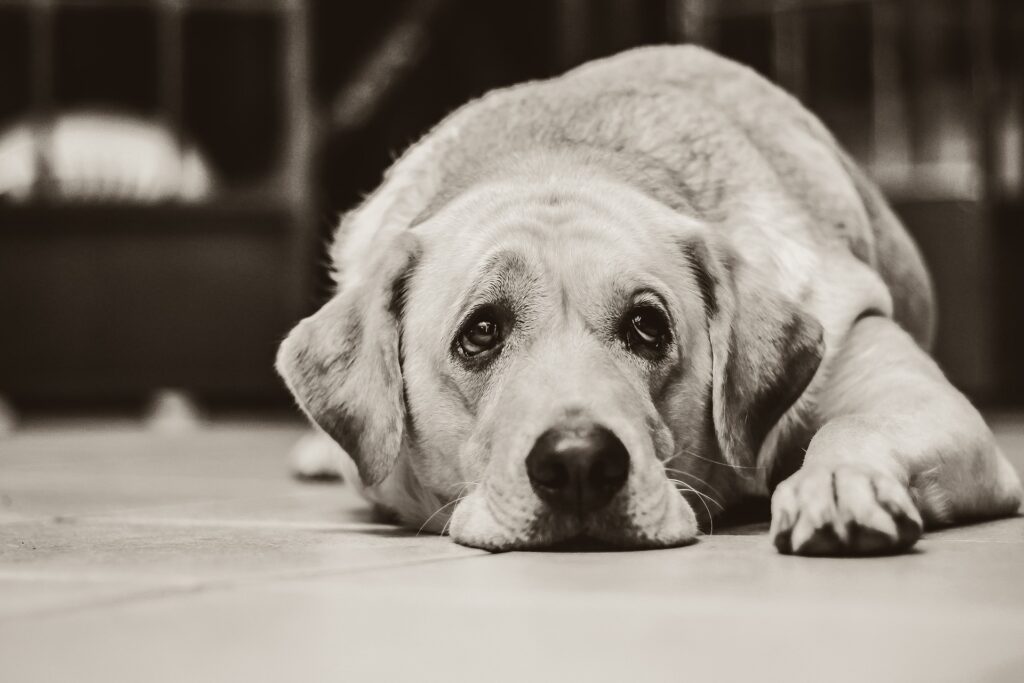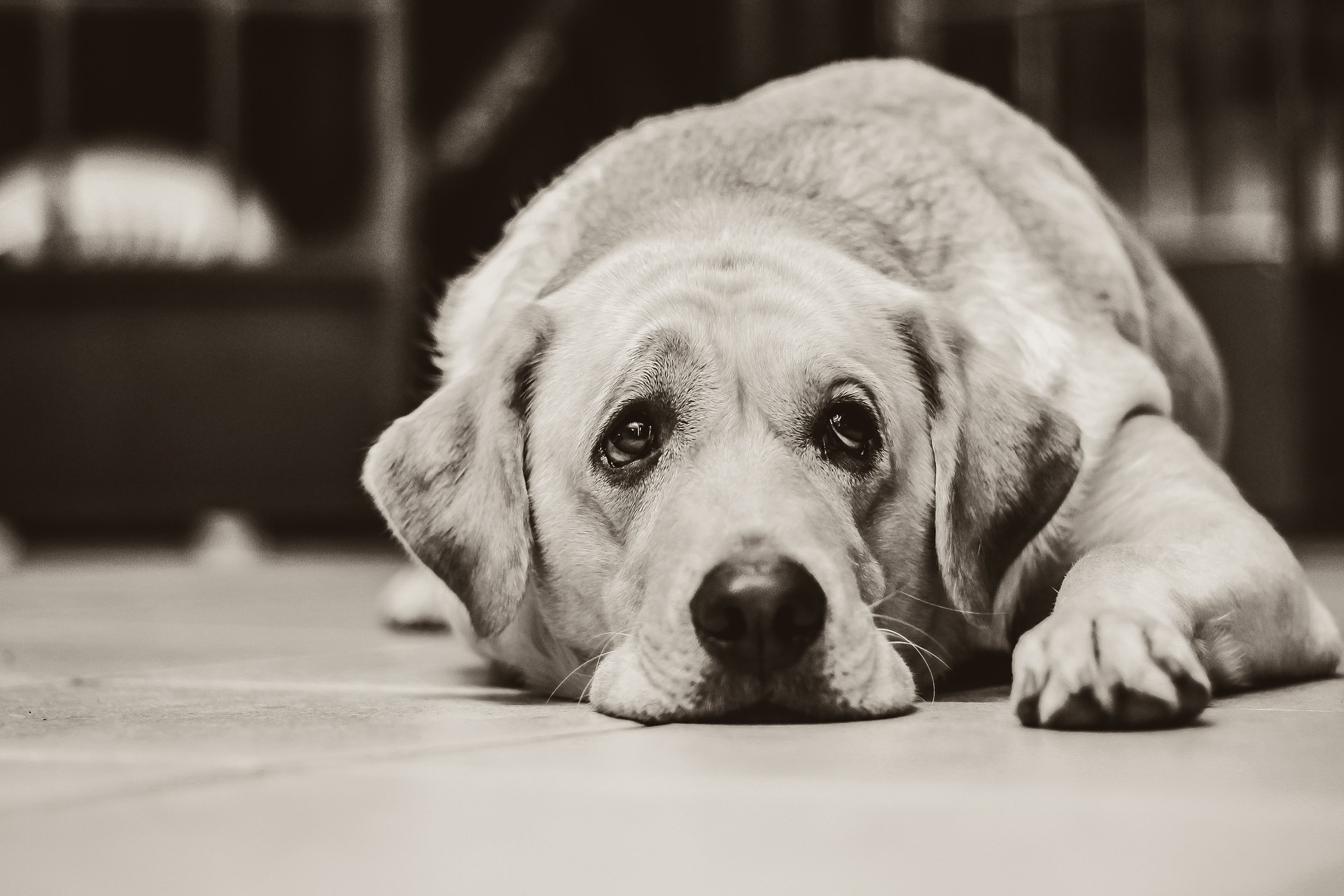
Urinary incontinence in dogs is more common than most pet owners think. Around 20% of spayed female dogs become incontinent at some point in their lives, and both neutered and intact male dogs are also susceptible to this problem.
The good news is, pet owners who are worried about how their beloved furry friends’ incontinence might impact their lives don’t have to panic. While incontinence can be inconvenient, it’s often temporary. Even when it becomes permanent, urinary incontinence doesn’t have to cause unnecessary suffering for either pets or their owners.
What Is Urinary Incontinence?
Urinary incontinence occurs when a dog begins to release urine involuntarily from his or her bladder. The amount of urine varies from tiny drops to a complete voiding of the bladder. Either way, incontinence is a separate issue from behavior-related urination problems like marking and anxiety urination.
In most cases, urinary incontinence is caused by one or more underlying medical issues. The first step any pet owner should take towards coming up with a plan for managing the effects of incontinence is to schedule a visit with the pet’s veterinarian. In the meantime, pet owners can get dog diapers online to limit the impact of accidental urine voiding on their own lives.
Signs of Urinary Incontinence in Dogs
Most pet owners notice their dogs’ newly developed urinary incontinence when they see dripping urine or pools of urine on the floor. While incontinent dogs are not generally aware that this is happening, they may also develop other behavioral changes such as excessive licking of the penis or vulva. Pet owners may also notice a rash on their dogs’ hind legs or the odor of ammonia.
Other easy-to-recognize signs that a dog may be suffering from urinary incontinence include:
- Urine trickling when the dog sits
- Wet patches where the dog has been sleeping
- Dribbling urine after the dog has already voided his or her bladder
- Involuntary urine loss during exercise
As soon as pet owners notice these signs, they should schedule visits with their dogs’ veterinarians. Incontinence can occur as a result of many different underlying conditions, so it’s important to get an accurate diagnosis before coming up with a long-term treatment or management plan.
Common Causes of Incontinence in Dogs
One of the most important things for pet owners to remember is that their animals are not voiding their bladders in inappropriate places on purpose. Affected dogs are rarely even aware that they are dribbling urine or voiding their bladders due to incontinence, so don’t treat it as a behavioral issue. Head to the vet to find out if the animal is struggling with one of these underlying conditions:
1. Hormone Imbalances
The most common cause of incontinence in female dogs, in particular, is hormone imbalance following spaying. Also known as hormone-responsive incontinence or urethral sphincter incompetence, this condition can technically occur in both male and female dogs, but it is far more common in middle-aged females.
Diagnosing hormone-responsive incontinence is a simple matter of performing a blood test. The vet will check the dog’s hormone levels, determine whether early spaying or neutering contributed to hormone imbalance and if that imbalance is causing incontinence, then help the owner come up with a treatment plan.
2. Untreated Urinary Tract Infections (UTIs)
Untreated UTIs can lead to incontinence in dogs. In this case, the accidental discharge of urine is accompanied by noticeable discharge, frequent urination, and/or trouble urinating. A veterinarian can diagnose a UTI by performing a urine culture, then prescribe antibiotics to clear the infection and resolve the incontinence problem.
3. Bladder Stones
Bladder stones affect how dogs store urine in their bladders, causing the muscles to contract more frequently. A small amount of urine leaks out when this happens, and the dog may exhibit signs of discomfort or pain. Bladder stones need to be treated by a professional as soon as possible.
4. Old Age
As dogs age, their bladder and urethra muscles tend to weaken. Older dogs often have a difficult time holding their urine as a result. They may try to get outside to urinate but have accidents before making it to the door. Aside from old age, obesity is one of the most common underlying factors in weakened bladder and urethra muscles, so pay attention to the dog’s weight and switch to a weight loss formula if recommended by the vet.
5. Spinal Injuries and Degeneration
Spinal injuries and degenerative conditions disrupt the nerves that control the bladder, resulting in full or partial incontinence. These nerve disruptions can be caused by:
- Neurological issues
- Brain diseases
- Lesions
- Spinal injuries
- Intervertebral Disk Disease (IVDD)
- Other spinal health issues
Generally speaking, urinary incontinence caused by spinal problems cannot be cured. It can only be managed.
6. Certain Medications and Diseases
Some diseases, including diabetes, kidney disease, and Cushing’s disease, can cause dogs to increase their water intake, as can some medications. Dogs may experience incontinence as a result of increased water intake if they suffer from these diseases.
7. Anatomical Abnormalities
Some dogs have birth defects, or anatomical abnormalities, that cause incontinence problems. The most common of them are ectopic ureters, which can be surgically corrected. Other anatomical abnormalities that can cause incontinence include urethral hypoplasia, Spina Bifida, and abnormal pelvic conformation.
Tips for Managing Incontinence
Once a veterinarian has pinpointed the cause of the incontinence, pet owners will need to develop a management strategy. Whether the problem is temporary or permanent, experts recommend taking these steps:
- Using doggie diapers
- Taking the dog for more frequent walks
- Using waterproof bedding
- Maintaining good hygiene
- Switching to a mesh material trampoline bed
Incontinent Dogs Still Deserve Love
The bottom line when it comes to urinary incontinence in dogs is that pets afflicted with it are not having accidents on purpose, nor do they have any control over their inappropriate urination. The two most important things dog owners can do for their animals are to take them to the vet for a definitive diagnosis and to continue giving their pets all the love and attention they deserve. Developing a management plan for dealing with the symptoms will also make life much easier for all involved.
